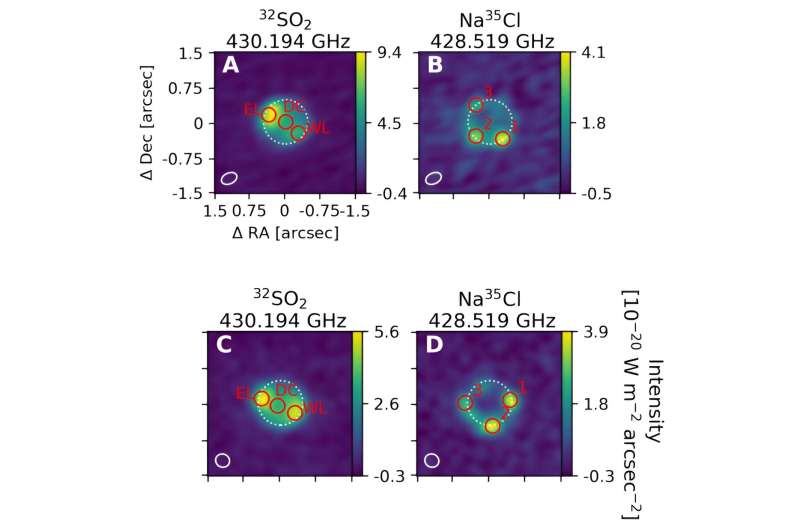April 19, 2024 report
This article has been reviewed according to Science X's editorial process and policies. Editors have highlighted the following attributes while ensuring the content's credibility:
fact-checked
peer-reviewed publication
trusted source
proofread
Study suggests Io's volcanoes have been active for 4.5 billion years

A team of geologists and planetary scientists from the California Institute of Technology, the University of California Santa Cruz, New York University, and NASA Goddard Space Flight Center reports evidence that Io's volcanic activity has been ongoing since the beginning of the solar system. In their study, published in the journal Science, the group studied sulfur isotopes in Io's atmosphere to determine how long the moon has been volcanically active.
Prior research has shown that the solar system is approximately 4.5 billion years old and that Jupiter's moon, Io, is the most volcanically active body in the solar system. But until now, researchers did not know how long the moon has been active. To find out, the research team used data from ALMA to analyze the gases present in Io's atmosphere.
Io is volcanically active due to the gravitational effects of Jupiter and also the two moons Ganymede and Europa—together, they tug on Io, leading to a build-up of underground pressure, which escapes through volcanic eruptions. The unending eruptions have led to a constant flow of lava onto the moon's surface, which results in continuous changes to its geography, making it difficult to learn more about its history.
The team focused on ALMA data about molecules with chlorine and stable isotopic radios of sulfur. They found that both were more heavily represented in Io's atmosphere compared to the atmospheres of other planets and moons in the solar system. The team also found that between 94% and 96% of the sulfur isotopes that make it into the atmosphere due to volcanic eruptions are lost to space. The evidence indicates that the steady volcanism has been ongoing for as long as Io has existed, approximately 4.5 billion years.
The research team plans to continue to study Io to investigate whether the moon had an initial cooler period that ended due to the relentless volcanism. They will also be looking into whether the moon might have had an ice crust or ocean.
More information: Katherine de Kleer et al, Isotopic evidence of long-lived volcanism on Io, Science (2024). DOI: 10.1126/science.adj0625
Journal information: Science
© 2024 Science X Network





















